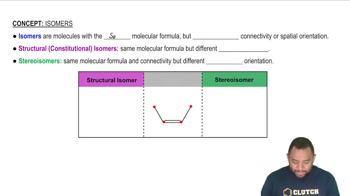Here are the essential concepts you must grasp in order to answer the question correctly.
Empirical Formula
The empirical formula represents the simplest whole-number ratio of the elements in a compound. To determine it, one must convert the percentage composition of each element into moles, then simplify the ratio of these moles. For fumaric acid, this involves calculating the moles of carbon, hydrogen, and oxygen based on the given percentages and finding the smallest whole-number ratio.
Recommended video:
Empirical vs Molecular Formula
Molecular Weight
The molecular weight (or molar mass) of a compound is the sum of the atomic weights of all atoms in its molecular formula. It can be determined by first finding the empirical formula and then using the molar mass of each element to calculate the total mass. In the case of fumaric acid, the molecular weight can also be inferred from the osmotic pressure data using the ideal gas law and the relationship between osmotic pressure and molarity.
Recommended video:
Weight Conversion Example
Structural Isomers
Structural isomers are compounds that have the same molecular formula but different arrangements of atoms. For fumaric acid, drawing possible structures involves considering the placement of double bonds and functional groups. The presence of a trans double bond indicates specific geometric configurations, which can help identify the correct structure among the isomers based on the spatial arrangement of atoms.
Recommended video:
 Verified step by step guidance
Verified step by step guidance

